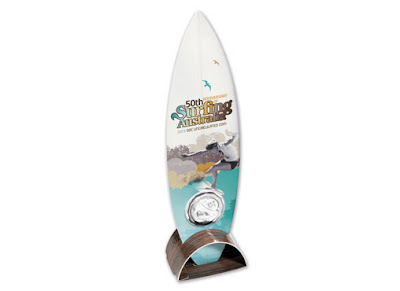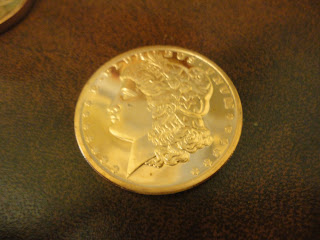It turns out that the humble penny is a pricey coin. Specifically, each new penny coined by the government costs 2.4 cents.
My point here is not to remind you that pennies are anachronisms that ought to be dispensed with entirely—
though that is true. This is actually a story about the federal budget, and why it’s so tough to manage.
Yesterday, President Obama unveiled his budget for 2013—a plan for everything that the government will
spend money on and where it intends to get that money. I won’t bore you with the details, since this document won’t survive first contact with Congress and doesn’t offer a final picture of what government activity will look like next year, although it does reveal
a lot about what the president thinks is important.
One good idea in the budget is to change the way we make those expensive pennies and nickels (which cost 11.2 cents each), using cheaper metals to do the job. Pennies are now made mostly of zinc, and nickels have more copper than nickel. If we switch up the raw materials—perhaps to an aluminum alloy, like other advanced economies, or else industrial porcelain—the Treasury Department estimates we could save about $100 million a year.
Of course, $100 million a year sounds awesome, but in budget terms it’s a tiny amount of money—less than one-100th of 1 percent of the entire $3.7 trillion the president proposes spending next year. But like everything that matters, budgeting is a game of inches, so lopping off small stuff—especially no-brainer waste like this—is a good way to find breathing room as you work your way up to the big stuff
Did I say no-brainer waste? This is where it gets interesting. Even though this idea seems like pragmatic good government, there are plenty of people who think it’s a bad idea.
The Wall Street Journal wrote about many of these naysayers in 2010, the first time the president proposed the idea. Here are some of the usual suspects:
Zinc miners. Believe it or not, the people who sell zinc the government uses to make pennies aren’t eager for them to change their ways. Big Zinc spends a lot of time lobbying to keep pennies the way they are—even funding an organization called Americans for Common Cents to lobby Congress to keep the penny around.
People who conflate coins' value with the metal in them. Plenty of people think that coins are valuable because they have valuable metal in them, but that’s not how it works: Our money is valuable because we agree to use it as a medium of exchange. Supply and demand determines the rest; U.S. money hasn’t depended on the price of any metal since 1971. People who believe that there’s a scenario that involves selling their pennies to the local zinc smelter would probably be better off hoarding bullets instead. There are also a lot of people who just plain like pennies and think new ones won't be as nice.
Businesses that rely on coin-operated vending machines. Folks worry that vending machines, laundromats, coin-counting machines, and parking meters will need to be adjusted en masse if coins' weight or conductivity (two common ways machines identify change) shifts. This is a pretty reasonable concern, but when was the last time you used a penny or a nickel at a vending machine?
When all is said and done, these reasons probably aren’t worth the extra $100 million it costs us not to change the composition of the coins. But these people think about pennies a lot, and they spend money to let the government know what they think. When was the last time you thought about the penny, much less mentioned it to an elected representative?
Now imagine how this dynamic plays out when it comes time to cut outlays on more complex, more expensive issues like health care and national security, which affect nearly everyone and touch businesses across many sectors. The same thing happens with other deficit-drivers, like the Bush administration’s tax cuts or the raft of tax breaks we give out to individuals and corporations.
The penny paradox is a dilemma at the heart of democratic government—a engaged, concentrated group of people who benefit from spending can keep it going, even if it’s not in the broad public interest. Conservatives and other folks with an anti-government bias see this dynamic as one more reason to keep the government out of the spending business. Meanwhile, those of us who think the government can do more harm than good see this as a problem to be solved through better institutional design, a more engaged citizenry, and better politicians—if we can find them.
So if you’re ever wondering why Washington’s fights over the budget seem wildly out of proportion or overly gridlocked, remember that cutting waste and focusing on top priorities is harder than it looks. And the next time you hear someone complaining about our sky-high deficits, ask them how much it costs to make a penny.





















